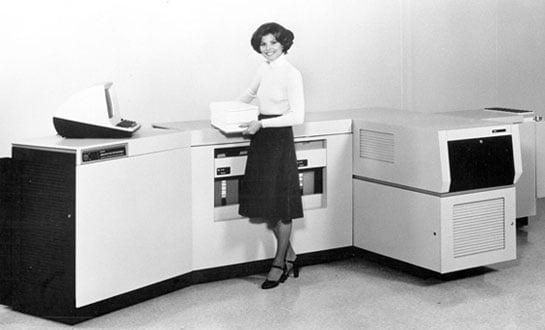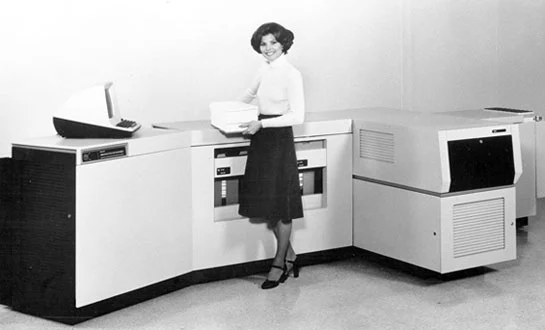
6 Facts About Laser Printer
- IBM invented the first laser printer in 1985. It was known as the IBM 3800 and was capable of printing 180 pages per minute.
- Each laser printer cartridge is equivalent to around one gallon of oil. The majority of the components in laser printer cartridges are recyclable.
- Initially, laser printers were more expensive than inkjet printers. However, toner cartridges and paper were less expensive. Laser printers need three times as much electricity as desktop printers. On the other hand, an idle desktop printer consumes five times the energy of a Laser Printer.
- In 2009, the world’s fastest color laser printer was created for office use. It had a printing speed of 37 double-sided sheets per minute. It can produce 47 single-sided sheets. It is capable of printing 47 single-sided sheets per minute.
- Laser printer fusers heat up to nearly 400 degrees Fahrenheit to fuse toner to the paper. The paper must pass through the rollers as quickly as possible to avoid burning.
- Toners are designed for specific laser printers and come in a variety of sizes. The toners are made up of small plastic spheres that are adjusted to the electromagnetic charges of the laser printer for which they are built.
Laser Printer: History
Laser printers were first introduced for the workplace market in the 1970s at Xerox PARC, and then for the home market in succeeding years by IBM, Canon, Xerox, Apple, Hewlett-Packard, and many others. Over the decades, the uses of laser printers have improved as the price has reduced. Currently, there are several types of laser printers.
Monochrome Laser printers only print in black and white. This type is ideal for printing simple text documents. Color laser printers can print in four different colors: cyan, magenta, yellow, and black. A color printer is required if you need to print images or graphics. Compact Laser Printers are smaller and more compact and are used in small spaces. In Multifunction Laser Printer, scanning, faxing, and other features are available.
Businesses nearly exclusively use laser printers because they have a reputation for being dependable and producing high-quality prints. Printing corporate stationery, manufacturing labels, and creating company fliers and brochures are frequent uses for laser printers.
Laser printers, like other technological products, have become much less expensive over time. For example, the HP LaserJet, which cost $3500 in 1984 and weighed 32 kg, had problems handling even little, low-resolution images (71 lb). Monochrome laser printers had become affordable enough for home-office usage by the late 1990s, displacing earlier printing technologies. However, color inkjet printers still had an edge in photo quality reproduction. Low-cost monochrome laser printers may now be found for less than $75, and while they lack onboard processing and rely on the host computer to create a raster picture, they nevertheless surpass the LaserJet from 1984.
Laser Printer: How It Worked
Laser printers work using a laser beam to form an image onto an electrically charged, rotating disc. Charged electrons can fall away from light-exposed regions owing to photoconductivity. Electrostatic interaction pulls powdered toner particles to charged regions that haven’t been laser-beamed. The toner/image is subsequently transferred to paper by direct contact through the drum. Next, the toner/image is fused to the paper by extreme heat. It involves seven stages.
Processing. Image processing is the first step. The computer transmits the data to the laser printer’s internal memory when you click the print command on a specific document or image. The data from the printout is saved and prepared for processing here.
Charging: Charging is the second step. The laser printer begins to warm up. The corona wire warms up and prepares to discharge its positive static charge onto the metal cylinder drum. An AC bias voltage is given to the primary charge roller to eliminate any residual charges left by earlier pictures. A DC bias will be applied to the drum surface by the roller to guarantee a consistent negative potential.
Exposing: The third step is exposing. The drum acquires a positive charge throughout its whole surface as it rotates. Some laser printers, especially color all-in-ones, include four drums, one for each color: Cyan, Magenta, Yellow, and Black. After that, a laser is ignited and shot to a network of mirrors, mirrored over the drum surface. Through an opposing negative electrical charge, the reflected laser beam generates an outline of your print.
Creating: Next step is creating. While the drum rotates, positively charged carbon toner powder is rapidly discharged from the toner cartridge onto the drum. Because opposing charges attract, the positively charged toner powder adheres to the negatively charged, laser beamed locations (static electricity). Meanwhile, toner is not applied to positively charged parts of the drum.
Transferring: Then comes transferring. The transfer belt provides a positive charge to the paper or media as it passes over the printer. The negatively charged toner is pulled to the paper’s surface and adheres to your print shape as it goes through the drum.
Fusing: The toner is melted onto the paper by heated rollers known as the fuser unit. Your document or picture is imprinted on the page before being ejected as the final printing from the printer. Some printers utilize a very thin flexible metal foil roller, giving less thermal mass to heat, and the fuser can reach operational temperature faster.
Cleaning and recharging: Final step is cleaning and recharging. Before the drum completes its revolution, it is cleaned of remaining toner using an electrically neutral soft plastic blade. The leftover toner is subsequently disposed of in a waste reservoir. Finally, a charge roller applies a fresh negative charge to the newly cleaned drum, ready for another laser beam round.
Laser Printer: Historical Significance
1976: The IBM 3800, the first commercial implementation of a laser printer was introduced in 1976. It was created for use in data centers, where it replaced mainframe computers’ line printers. The IBM 3800 was utilized for high-volume printing on continuous stationery, with rates of 215 pages per minute (ppm) and a 240-dot-per-inch resolution (dpi). There were over 8,000 of these printers sold
1977: The Xerox 9700 was released to the public in 1977. The Xerox 9700, unlike the IBM 3800, was not designed to replace any current printers, but it did offer limited font loading capabilities. Printing high-value documents on cut-sheet paper with varied content was a strength of the Xerox 9700
1979: Canon, a Japanese photography and optics firm, created the Canon LBP-10, a low-cost desktop laser printer, in response to the commercial success of the Xerox 9700. Canon then began developing the Canon CX print engine, which resulted in the LBP-CX printer. Canon sought agreements with three Silicon Valley companies: Diablo Data Systems (who declined the offer), Hewlett-Packard (HP), and Apple Computer, despite having no prior experience marketing to computer users.
1981: The Xerox Star 8010, the first compact personal computer built for workplace usage, was released in 1981. Until the Apple Macintosh, the system featured a desktop paradigm that was unprecedented in commercial sales.
1984: The HP LaserJet, the first laser printer aimed at the mass market, was introduced; it used the Canon CX engine and is controlled by HP software. Printers from Brother Industries, IBM, and others swiftly followed the LaserJet. The photosensitive drums on first-generation machines were huge, with a circumference bigger than the loaded paper’s length. The drums could touch the paper numerous times in a pass once faster-recovery coatings were developed, allowing them to be smaller in diameter.
1985: Apple released the LaserWriter, which utilized the PostScript page-description language and was based on the Canon CX engine. Before 1985, each manufacturer had its proprietary page-description language, which made supporting software difficult and costly. PostScript allowed text, fonts, graphics, pictures, and color regardless of the printer’s manufacturer or quality. In 1985, Aldus also introduced PageMaker for the Macintosh and LaserWriter, and the combo proved immensely popular for desktop publishing.
2000: Solid ink printing was added to Xerox’s business and home printing supplies in 2000. The idea was created using laser printing technology to limit the amount of waste produced while refilling empty ink cartridges. Because of the ink’s technique to the paper, the technology can also support the printing of highly detailed, colorful pictures.







